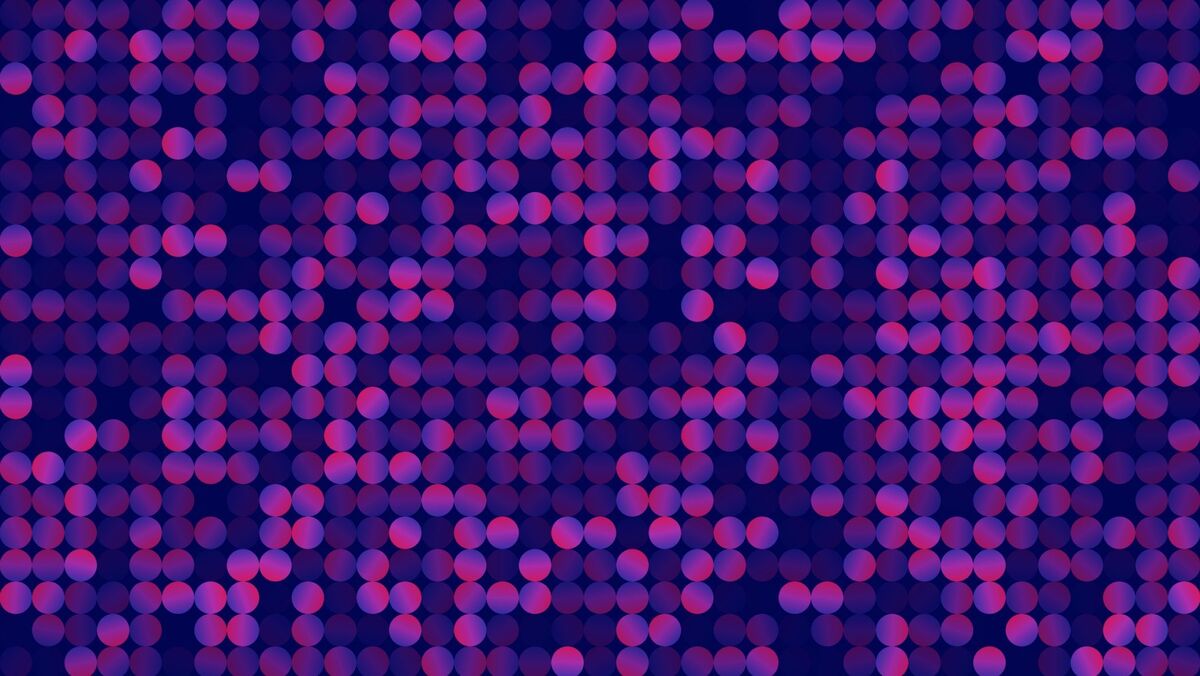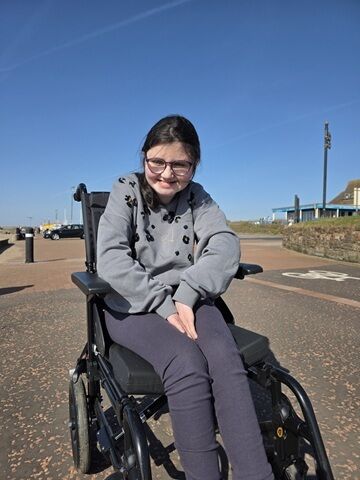Kayla's story: ReNU syndrome
Kayla is 14 years old and from Scotland. In 2024 she was diagnosed with ReNU syndrome.
The condition was only discovered by researchers that year after examining patient and participant data from Genomics England’s National Genomic Research Library, which allowed them to find a link between a specific gene and severe developmental delay that could affect thousands around the world.

About ReNU syndrome
ReNU syndrome is a neurodevelopmental disorder that is linked to genetic variants in the noncoding gene RNU4-2. Because the condition affects how the brain functions, it can impact learning, speech, movement, and behaviour.
Symptoms can include
being non-verbal, learning difficulties, seizures, facial distinctions and reduced muscle strength.
Hundreds of families
have received a diagnosis since the condition’s discovery.
Kayla’s story

When Kayla was born, it didn’t take long for doctors and her mother Joanne to take note of a few concerns. Kayla didn’t smile and would cry much more than her two older siblings when they were babies – no-one knew at the time that this was because Kayla was having constant headaches.
When she was 10 months old, she was diagnosed with hydrocephalus, known as ‘water on the brain’ after having a CT scan. She had a shunt – a thin tube – fitted in her brain to reduce the pressure. However, Kayla continued to experience many health and developmental issues.
Joanne says: “She spent a lot of time in plaster because of hip dysplasia and started walking independently when she was six. There were other problems as well. Kayla didn’t speak and doctors were stumped as to what was behind all of it. They would call it ‘Kayla’s syndrome’. No-one had any ideas.”
Joanne recalls this being “incredibly frustrating” to hear, and wanted answers that could explain why Kayla was going through what she was.
One of the most alarming issues, especially when Kayla was a baby, was repeated seizures. An especially scary incident occurred when Kayla stopped breathing one morning and had to be given mouth-to-mouth by Joanne’s husband.
Getting a diagnosis
The long search for answers continued until Kayla was 13, when the family received a letter asking them to see their geneticist. Joanne’s initial reaction was fear, wondering what they had found: “Kayla kept getting diagnosed with different things throughout her life, like epilepsy a couple of years before. I was scared it would be something that we didn’t know how to deal with.”
They were told that researchers had discovered a genetic change in the RNU4-2 gene that causes severe disabilities in children and adults. Later named ReNU syndrome – given by researchers and families – it symbolises that this diagnosis “renews” hope for a brighter future for all those affected. Kayla’s family were also told that a Facebook group had recently been set up and that they should join to hear from people with a lot of the same experiences.
Joanne says: “Having searched for an answer for 13 years and then finally getting one – there wasn’t just one reaction. It was a lot to take in. At first, I felt in limbo a bit. I was still scared of what might keep coming in Kayla’s life.
“But the support group was a real eye-opener. I took one look and immediately saw the similarities between Kayla and the other children. Things like loving water, going blue in the cold, having an infectious smile that everyone always comments on – that was Kayla.”
It was also a relief for Joanne to see that it wasn’t just children who had been diagnosed with ReNU syndrome, but adults as well.
She adds: “I’m so glad that it’s not ‘Kayla’s syndrome’ like the doctors used to tell me and that it’s a whole community. I’ve learned so much from speaking with other families and been able to help some of the younger children with the same problems Kayla has.”
Living with ReNU syndrome
While a diagnosis was a welcome and life-changing moment for Kayla’s family, so much is unknown about the condition. This means that while Joanne has been able to tell doctors that Kayla has ReNU syndrome, it still means going through some of the other diagnoses she received and symptoms – for example that while she can say some words, she doesn’t speak.
Joanne hopes for greater awareness of the condition and more research developments. She says: “If more people were aware of ReNU, it would be easier for new parents and hopefully they wouldn’t have to go through a long battle to find out what’s wrong with their child like I did.”
How whole genome sequencing can help those with ReNU syndrome
Kayla’s diagnosis was only possible because of whole genome sequencing data provided by patients and participants from the 100,000 Genomes Project. And now that the link between the RNU4-2 gene and neurodevelopmental disorder is known, more patients all over the world who have been searching for answers will be able to receive a diagnosis.
Crucially, it also offers the first step in the hope of a treatment being developed.